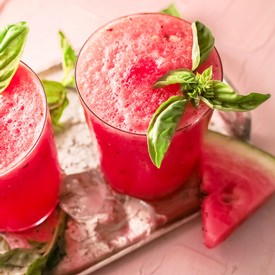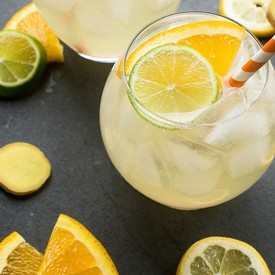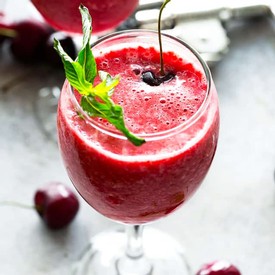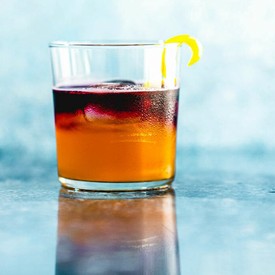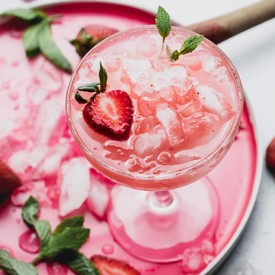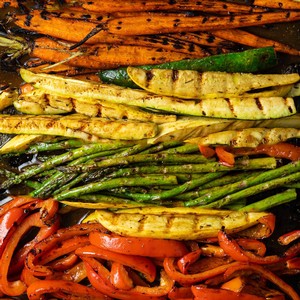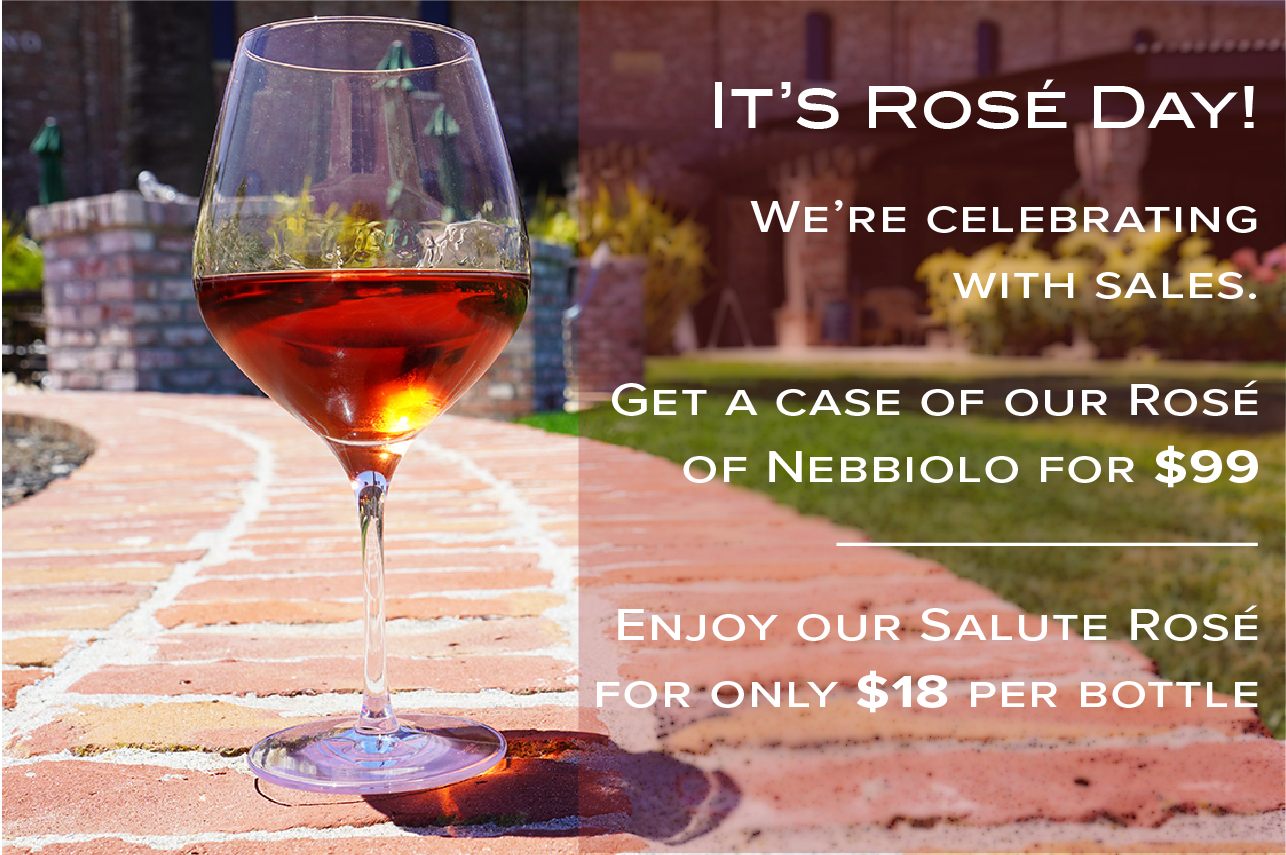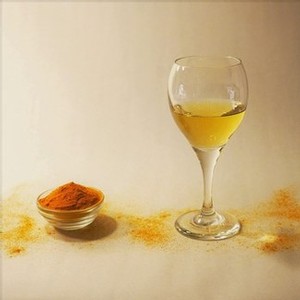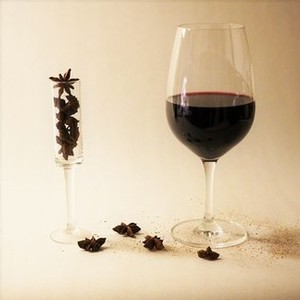Why White Wine is Worth Celebrating
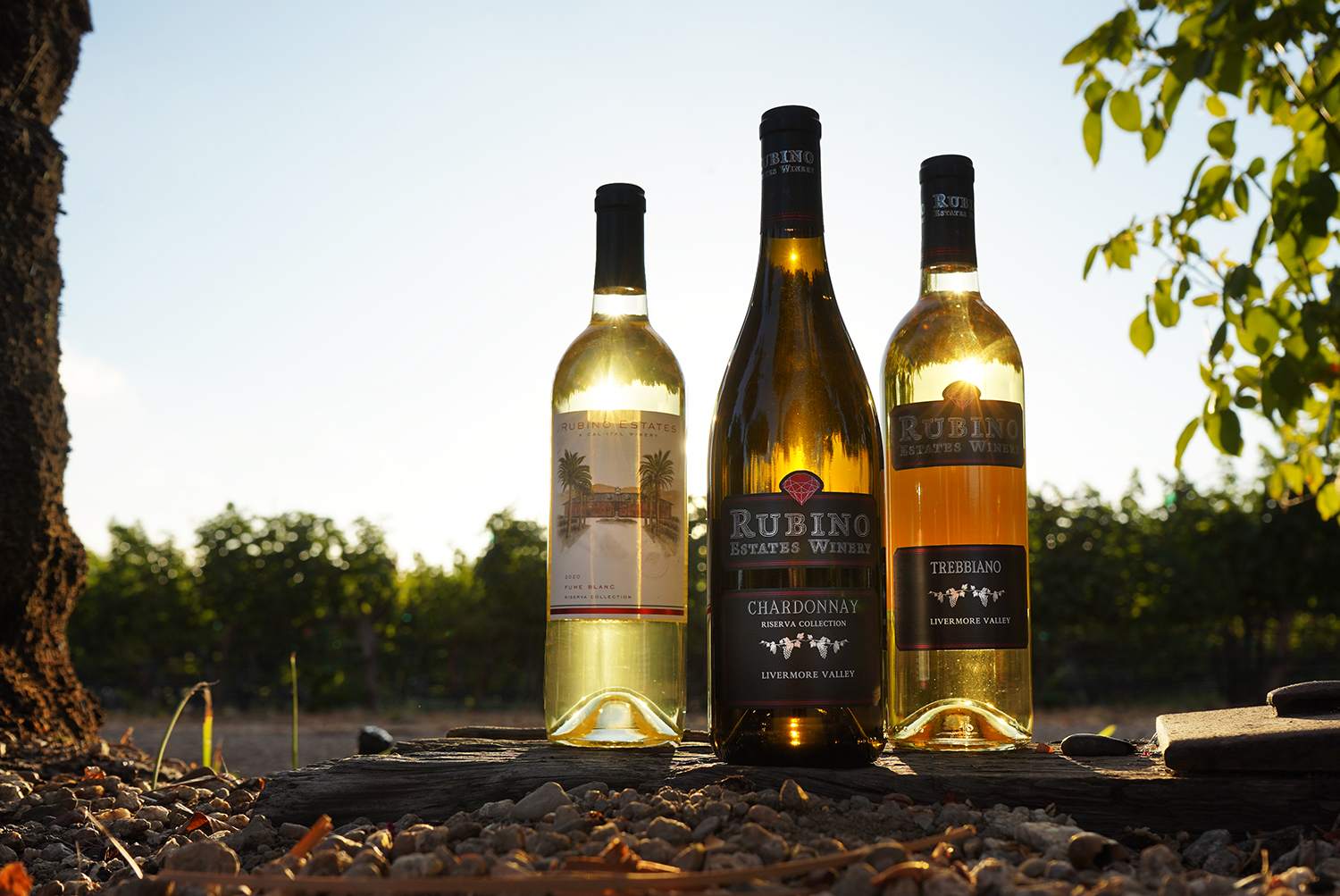 Though light in color, white wines can be big with flavor, technique, and enjoyment. Whether you prefer a buttery oaked Chardonnay or a bubbly light Sparkling, white wines are worth celebrating for their diversity and drinkability. In honor of White Wine day (August 4th) here are a few quick facts you might not know about vino bianco (white wine).
Though light in color, white wines can be big with flavor, technique, and enjoyment. Whether you prefer a buttery oaked Chardonnay or a bubbly light Sparkling, white wines are worth celebrating for their diversity and drinkability. In honor of White Wine day (August 4th) here are a few quick facts you might not know about vino bianco (white wine).
White wine can technically come from red grapes
Though this preparation is uncommon, red grapes can make white wine. The purest definition of white wine is simply any wine that is produced with minimal contact with the skin of the grapes, and wines fermented without contact with the skins will be colorless since the skins dictate the color of the wine. One example of this technique is Pinot Grigio, a white wine made from vibrant purple grapes. Generally, however, white wines are produced from “white” grapes, which are generally a golden-green hue.
White wine has few tannins
Tannins are the colorful compounds in the skins of darker grapes. In addition to giving red wine its color, the presence or absence of tannins creates the strongest distinction between the experience of tasting red vs. white wines. Instead of deep, tannic flavor, white wines generally emphasize buttery smooth texture and dynamic aroma, or refreshingly delicious acidity.
White wine is easier on your head
Most white wines have lower alcohol content than red wines. Between this factor and the lower level of tannins, white wines are less likely to lead to fearsome headaches. Additionally, white wines are generally less caloric than red wines!
White wine has a range of profiles
Chardonnay is just the tip of the iceberg when it comes to white wines. These wines grow all over the world and are produced according to the style of the individual winemaker. In addition to varietal differences, the technique that goes into crafting a delicious white wine creates a world of possibilities. If you think you don’t enjoy white wine, keep sipping! You just haven’t met the one for you yet.
White wines are ideal at 45-50˚F
For anyone newer to serving and sipping white wine, it’s important to know what temperature is best for enjoying your vino. Because of the shorter fermentation and aging process, a deliciously delicate and dynamic aroma graces many white wines. This aroma is best appreciated when the wine is chilled. The acidity of white wine truly shines when cold, creating the most refreshing sips possible.
If you’d like to enjoy some of our white wines here, make sure to try our White Wine Flight which features some Estate-grown Cal-Ital favorites!
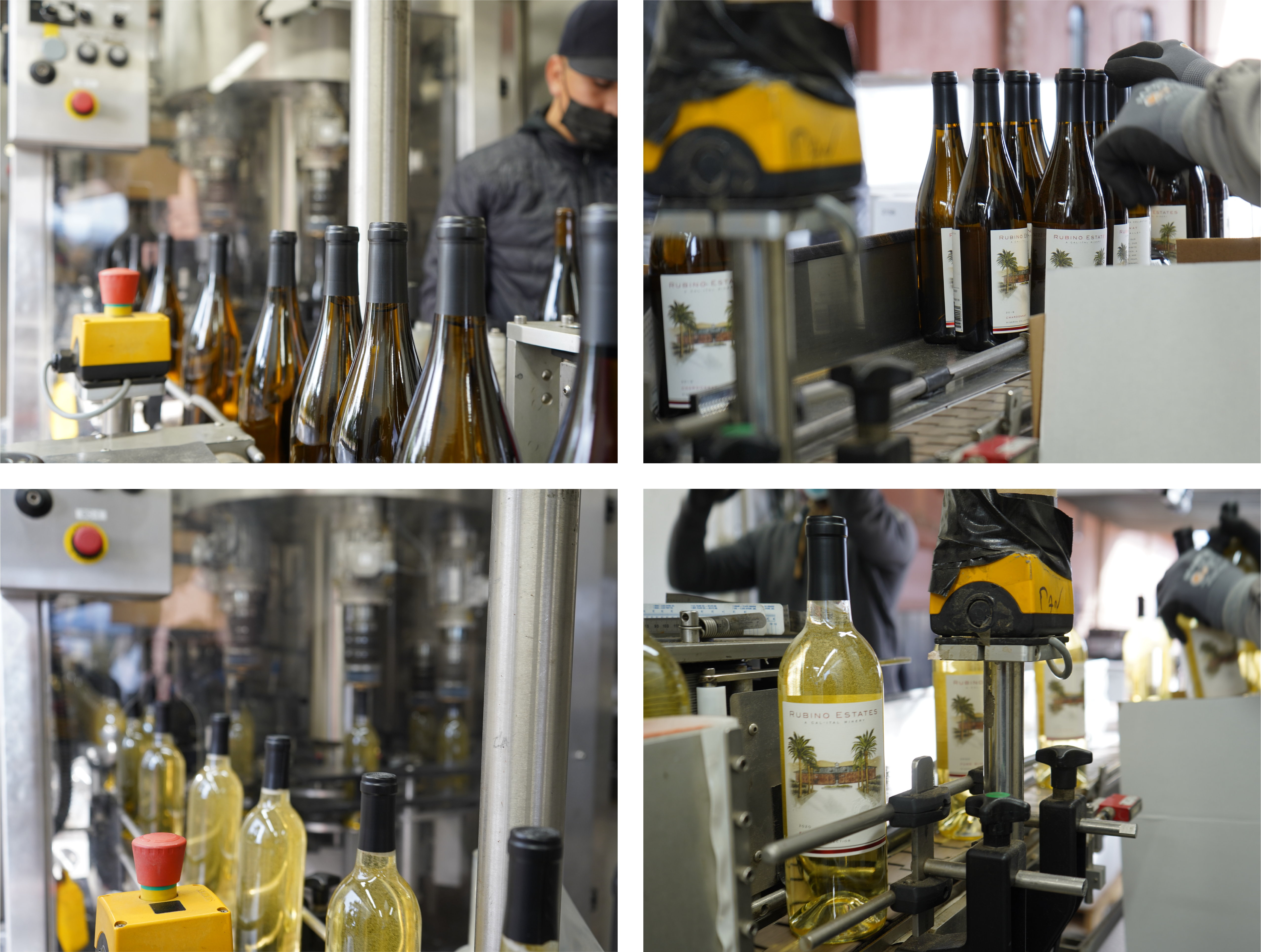 Because we are almost 100% estate-grown here, we see our wines through every step of the process—growing, harvesting, fermenting, aging, bottling, and everything in between. The photographs above were taken this past March while we bottled our Fumé Blanc and Chardonnay, two of our wines featured on the White Wine Flight.
Because we are almost 100% estate-grown here, we see our wines through every step of the process—growing, harvesting, fermenting, aging, bottling, and everything in between. The photographs above were taken this past March while we bottled our Fumé Blanc and Chardonnay, two of our wines featured on the White Wine Flight.
A Splash of Color: Verasion 2021
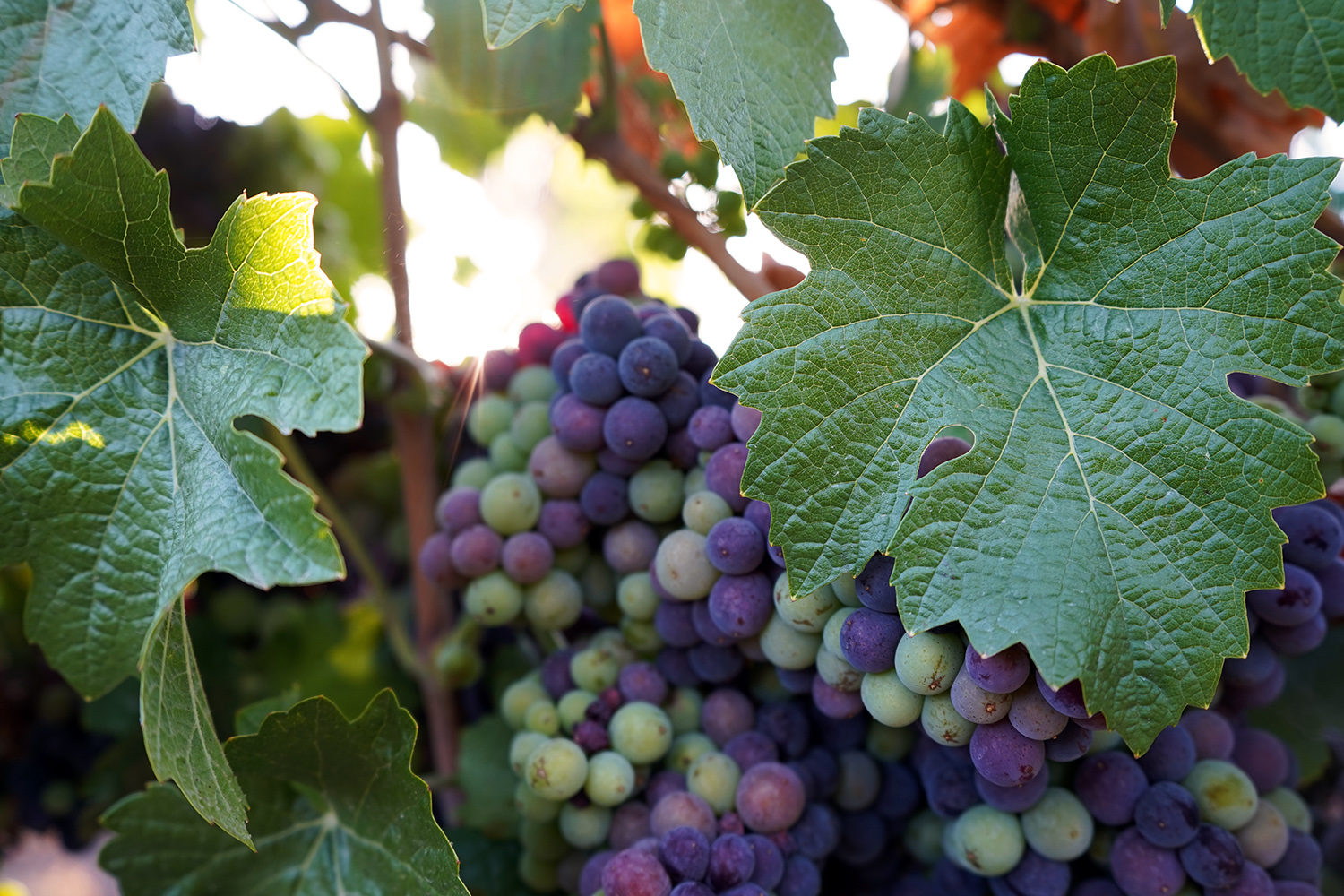 This time of year, the vineyards put on a breathtaking show. Over the course of a few weeks, the green clusters of grape berries shift their color in a process called verasion, marking the end of the growing period and the beginning of ripening. Our winemaking team now begins the countdown to harvest, which usually begins 2 months after the onset of verasion.
This time of year, the vineyards put on a breathtaking show. Over the course of a few weeks, the green clusters of grape berries shift their color in a process called verasion, marking the end of the growing period and the beginning of ripening. Our winemaking team now begins the countdown to harvest, which usually begins 2 months after the onset of verasion. 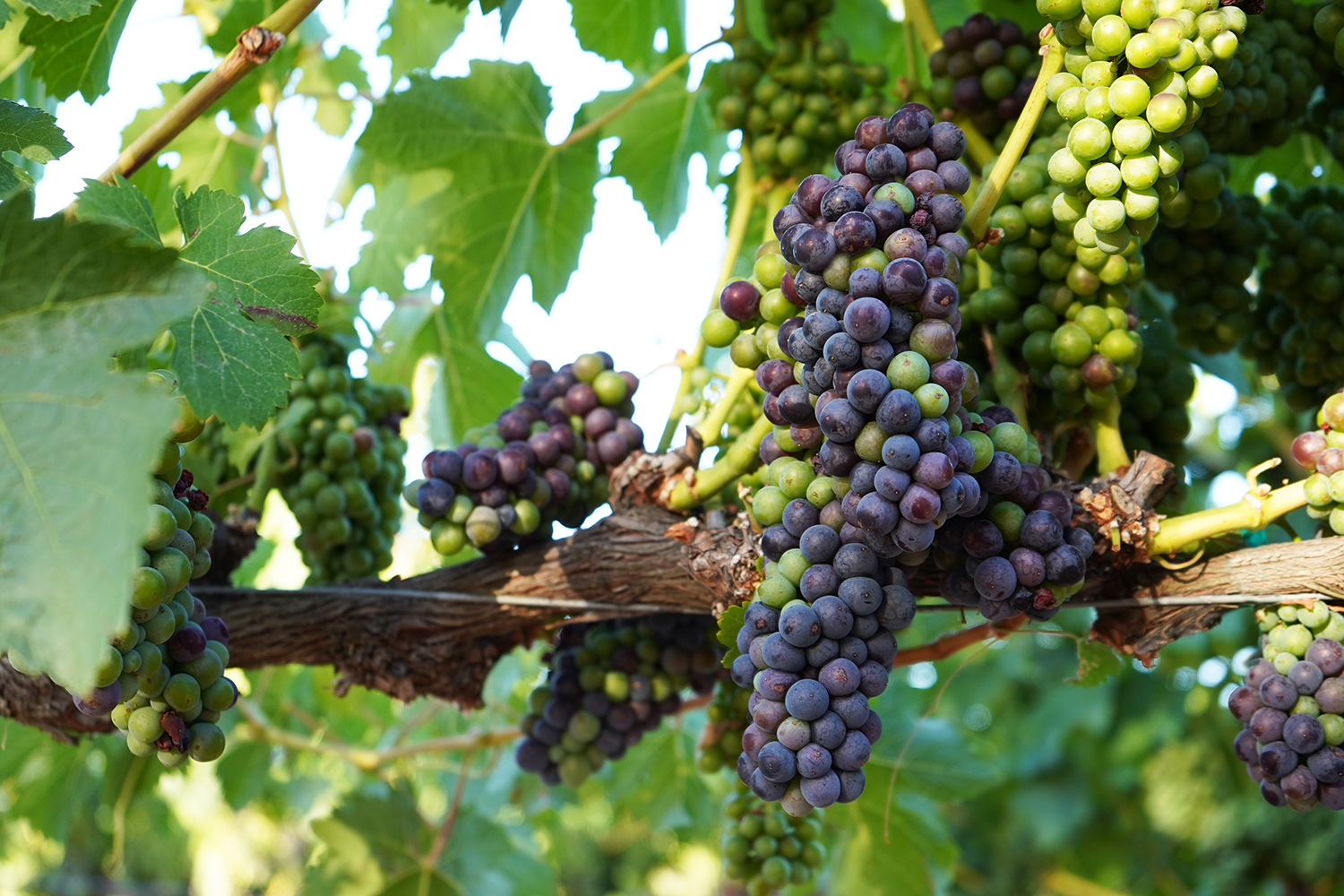 Not long before verasion, the vineyard team meticulously prunes the vines in a process called "leafing" which exposes the fruit to more sunlight, moving the ripening process along. During verasion, our red wine grapes develop their purple color, while our white wine grapes take on a more transparent golden-green.
Not long before verasion, the vineyard team meticulously prunes the vines in a process called "leafing" which exposes the fruit to more sunlight, moving the ripening process along. During verasion, our red wine grapes develop their purple color, while our white wine grapes take on a more transparent golden-green.
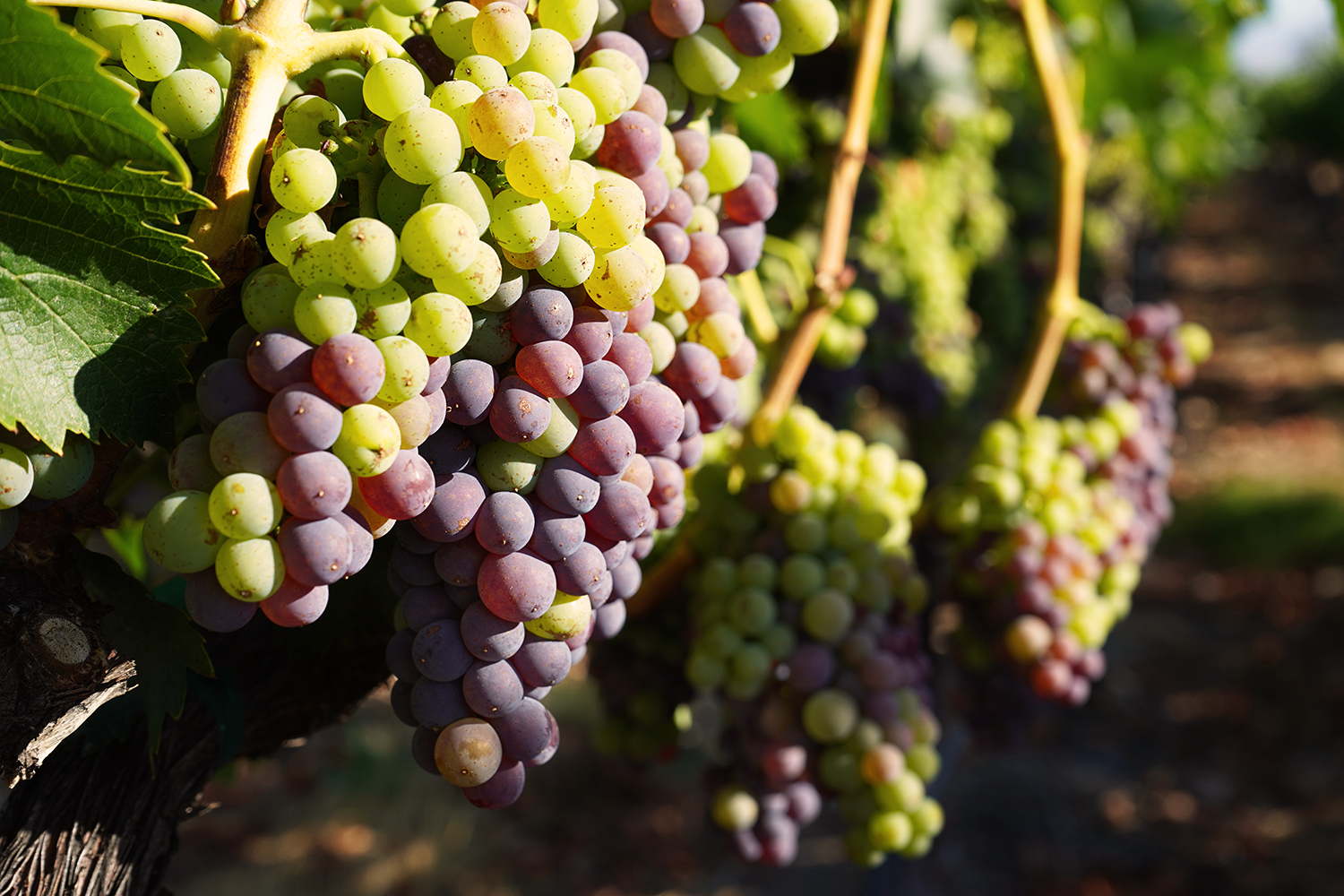 Each varietal takes on a different shade at its own pace. Monitoring the vineyard is especially vital during this part of the year, and it is one beautiful chore. The vines are at their most resplendent each day at sunrise and sunset, shining in the light as a marvelous mosaic of color.
Each varietal takes on a different shade at its own pace. Monitoring the vineyard is especially vital during this part of the year, and it is one beautiful chore. The vines are at their most resplendent each day at sunrise and sunset, shining in the light as a marvelous mosaic of color. 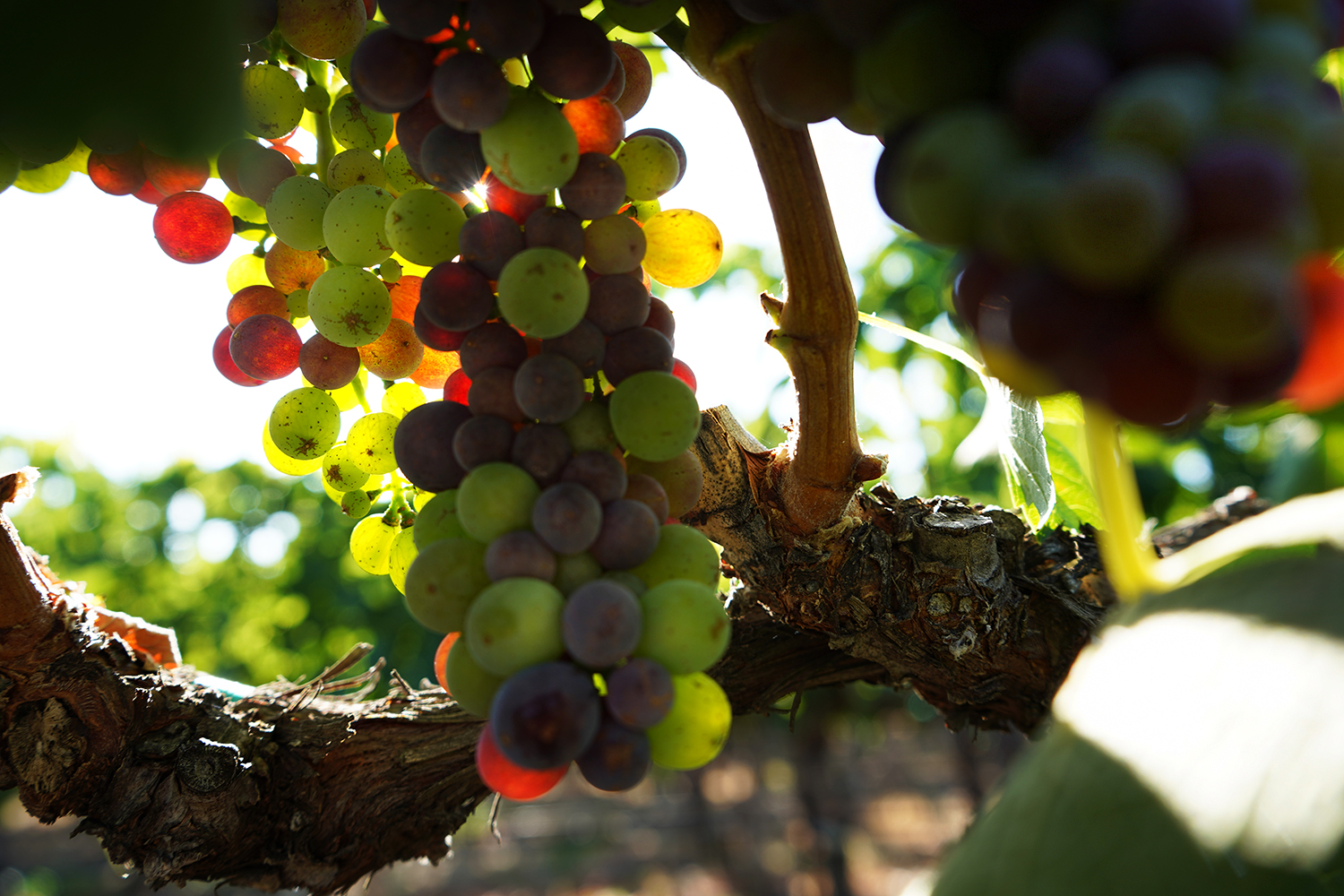 Verasion begins at a different times, dependent on varietal, terrior, and weather. Our first varietal to show color is generally Petite Sirah, developing a gorgeous dark purple hue in mid-July, but our Sangiovese surprised us this year by blushing first!
Verasion begins at a different times, dependent on varietal, terrior, and weather. Our first varietal to show color is generally Petite Sirah, developing a gorgeous dark purple hue in mid-July, but our Sangiovese surprised us this year by blushing first!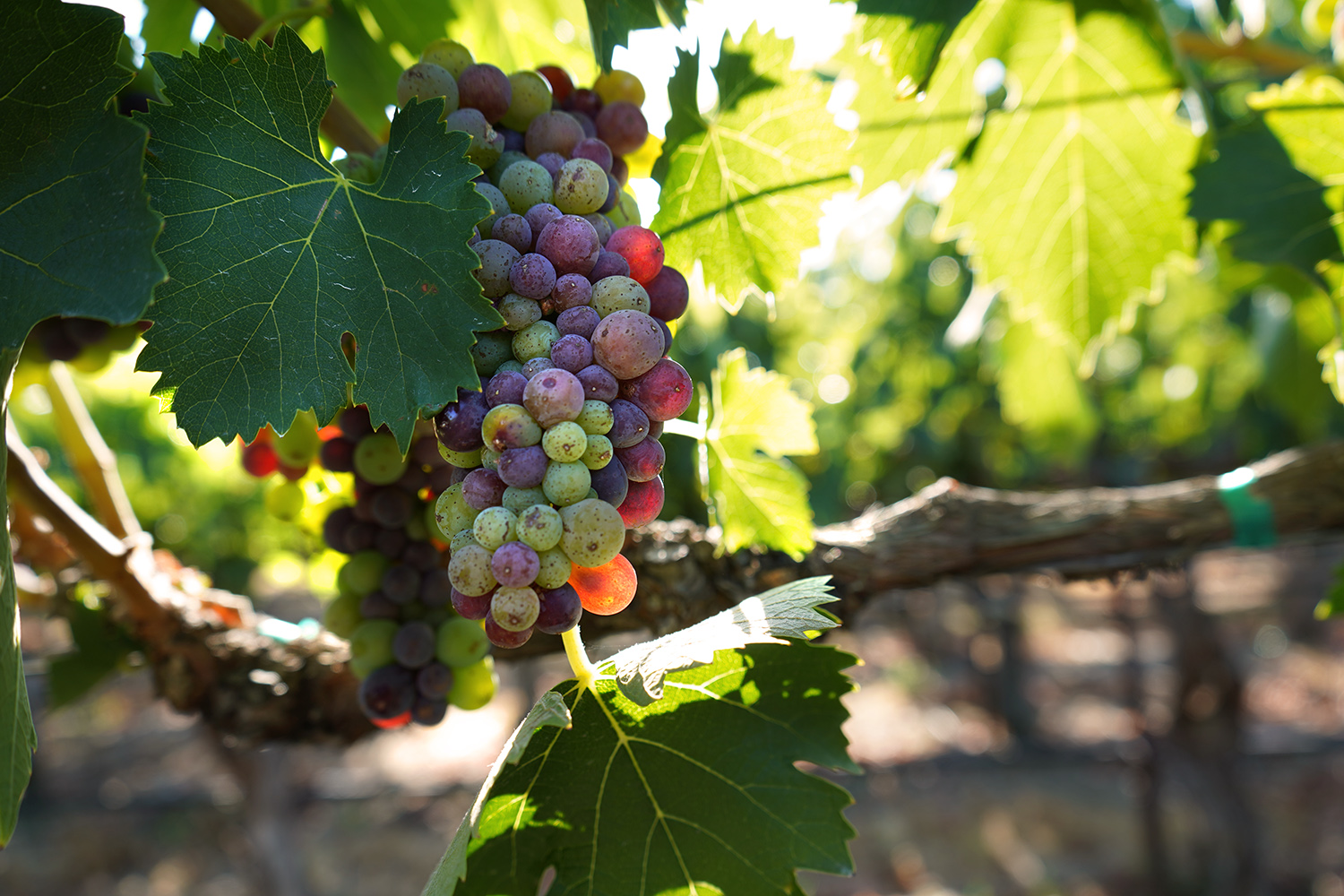
The Easiest Red Wine Syrup
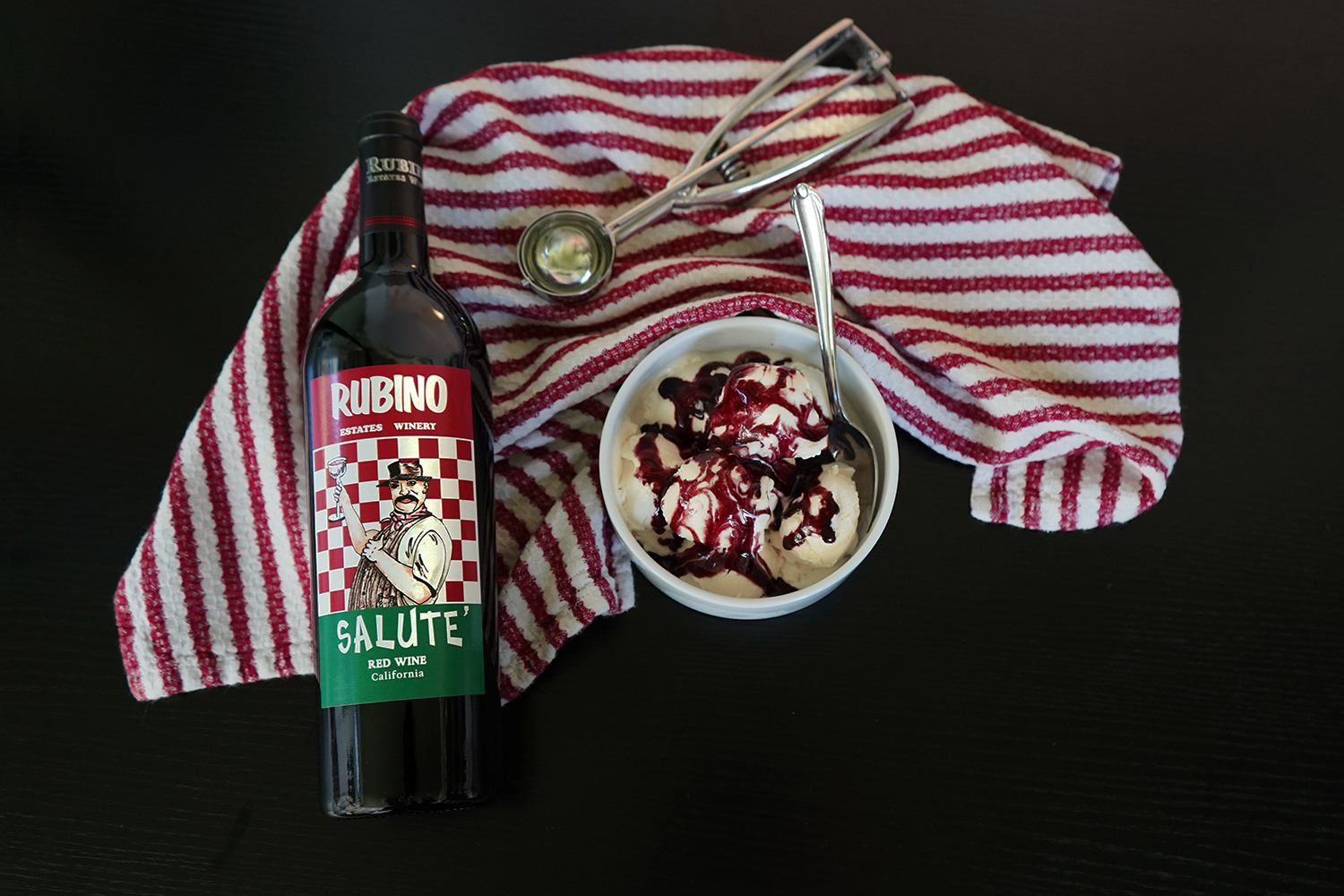 Did you know July is ice cream month? Now is the perfect moment to serve up a few scoops of your favorite ice cream with a new topping: red wine syrup. If you’re looking to elevate your ice cream (and chocolate and caramel don’t cut it) then this is exactly what you need. Enjoy the subtle complexities of the added spice along the fruit notes of our Salute Red for a perfect summertime treat. After all, it’s hard to go wrong with wine and ice cream, and believe it or not, this syrup is very easy to make!
Did you know July is ice cream month? Now is the perfect moment to serve up a few scoops of your favorite ice cream with a new topping: red wine syrup. If you’re looking to elevate your ice cream (and chocolate and caramel don’t cut it) then this is exactly what you need. Enjoy the subtle complexities of the added spice along the fruit notes of our Salute Red for a perfect summertime treat. After all, it’s hard to go wrong with wine and ice cream, and believe it or not, this syrup is very easy to make!
Spiced Red Wine Syrup
Ingredients
- 1 bottle Salute Red
- Generous pinch of sea salt
- 2/3 cup sugar, adjust to taste
- 1 teaspoon peppercorns, bruised
- 2 cinnamon sticks, broken
- 4 whole cloves
- 2 teaspoons vanilla extract
Instructions
- In a 12-inch straight-sided sauté pan combine everything and heat over medium high. Cook down the wine syrup, uncovered, until thick enough to lightly coat a spoon, usually about 10-15 minutes. Immediately pour into another container to cool down.
- Allow the syrup to cool to room temperature, then enjoy atop your favorite ice cream. Keep leftovers in the refrigerator for up to three months.
Not in the mood for ice cream? That’s okay too! This syrup tastes great on just about anything. Try it on fresh fruit, brownies, or even on your pancakes (talk about a luxurious brunch)! If you don’t have much of a sweet tooth, try this syrup as a finishing sauce on grilled meats or roasted foods like lamb, pork, or even yams. You can also use it as a dip for your cheese boards and enjoy a symphony of flavors like never before.
Feel free to customize this recipe to your liking! Any of our full-bodied or fruit-forward reds will taste phenomenal, and you can adjust the spices to your liking to make the best syrup for your palate. Try adding additional mulling spices, orange peel, or almond extract for added complexity. Even better, if you increase the sugar in the recipe, try using this syrup in place of simple syrup in your favorite cocktails and watch the flavors illuminate!
Wondering which ice cream to try with this syrup? Try classic vanilla bean, pecan praline, or go full neapolitan. Let us know what you try @rubinoestates!
The Duck Tour Returns to Rubino Estates
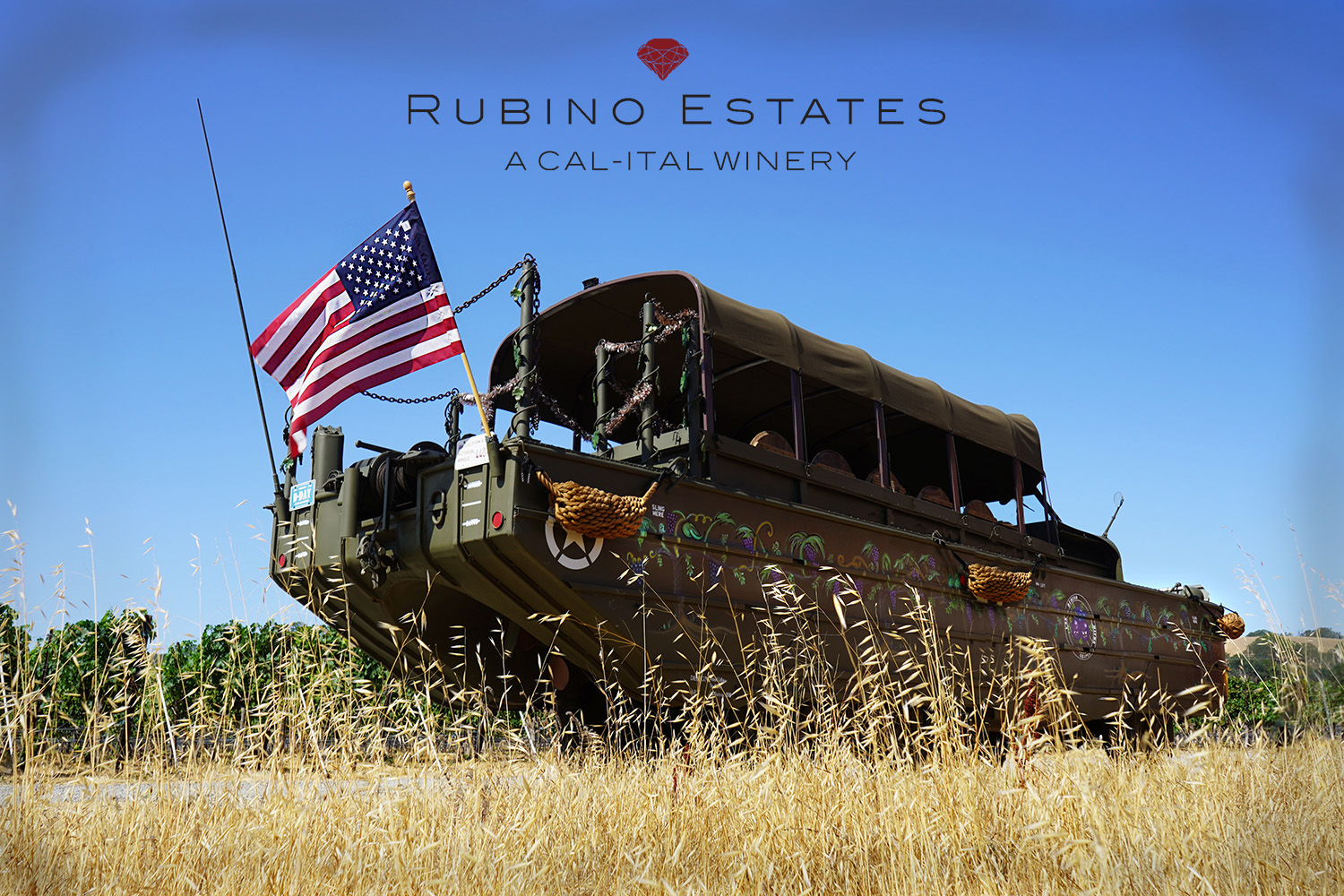
After more than a year’s pause, we are proud to announce the return of our Duck Boat Tour! If your craving for adventure matches your love for good wine, then this experience is perfect for you. Embark upon a journey in our historic Duck boat for an experience including panoramic views, a knowledgeable and charming tour captain, and of course delicious food and wine! Our Duck Boat is an authentic DUKW amphibious vehicle, circa 1950. This vessel now bears the name “USS Rubino” and will take you on a tour unlike any you've ever experienced.
You will begin in the grand ambience of the tasting room, where you will find your Tour Captain ready to whisk you away on a journey around the beauty and secrets of the Estate. It’s time to grab a glass and get going! Soon, you will be taken for a behind-the-scenes peek at our production facility. You’ll have a chance to see equipment from every part of the winemaking process, including thousands of oak barrels. Many of these barrels contain the early stages of what will become your favorite Cal-Ital wines.
Now, the adventure continues as you step aboard the USS Rubino and embark upon a spirited drive through our Estate Vineyard, where you may encounter local wildlife snacking on grapes, young vines developing delicate tendrils, and unbeatable views of the Livermore Valley. As your Captain guides you through the acres of vines, you’ll have a chance to ask questions and learn more about the story and viticulture of the area.
Before returning to the tasting room, you will come to a large table among the vines, shaded by an oak tree. You will be treated to an exclusive flight featuring wines from all of our collections here at Rubino Estates alongside delicious food offerings, including artisan cheeses and other gourmet bites. As you wine and dine amid the vines, your captain will guide you through the flight, giving you expert insight into what makes these wines special. Upon your return to the tasting room, it’s time for dessert! Dark Chocolate alongside our Infinitum Dessert Wine is the cherry on top of this delicious day!
Whether you’re local or visiting for a day, if you want an immersive look into the wine country of the Livermore Valley, don’t miss this opportunity. Our Estate is rich with history and legacy, and it’s our pleasure to invite people into it! Ready for a wine-lover’s adventure? Book now! Give us a call at (925) 484-1699 or email us at events@rubinoestateswinery.com anytime.
5 Wine Cocktails to Try This Summer
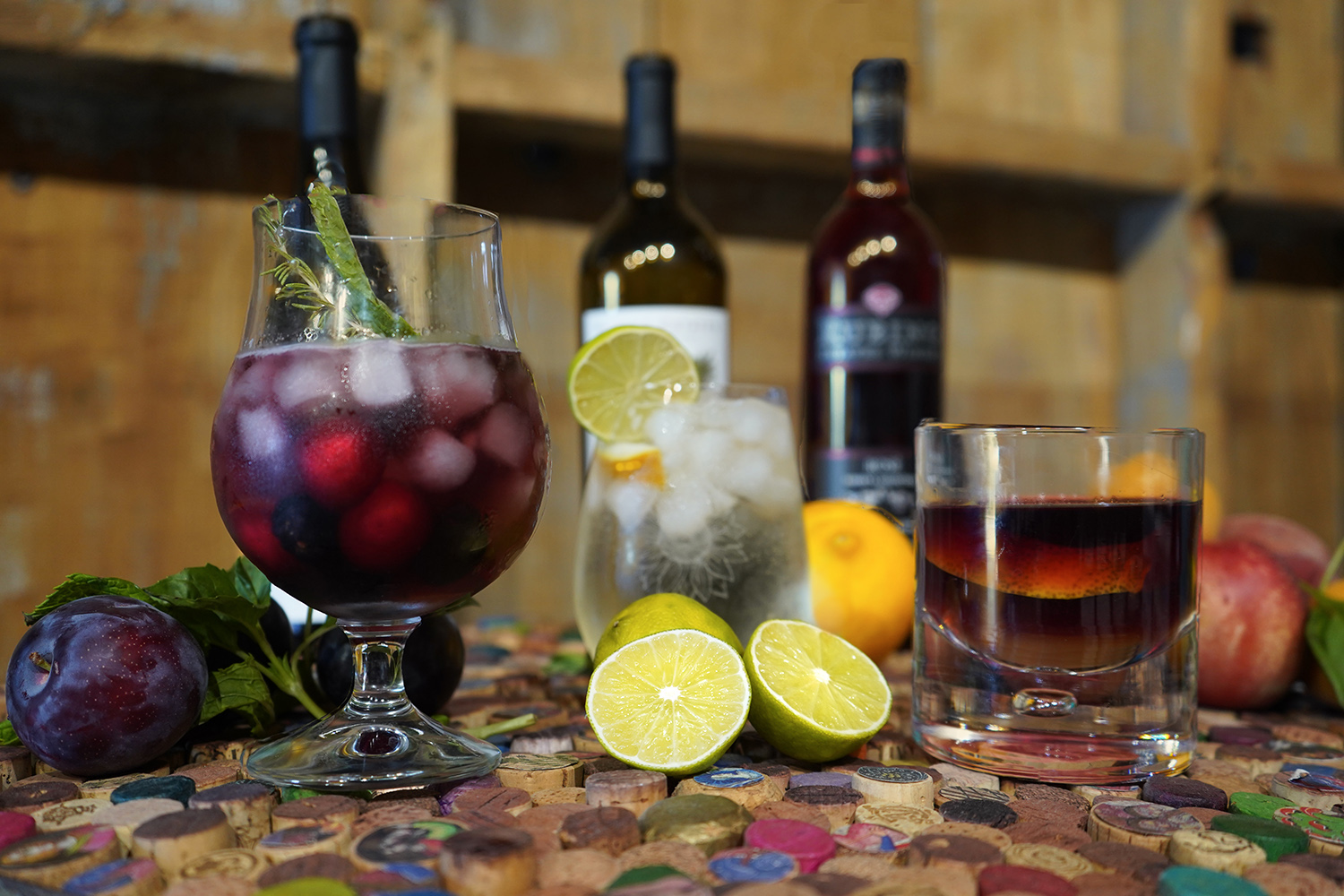 What are you sipping this summer? If you’re looking to branch out from a rotation of chilled Chardonnay and Rosé, we’ve got some refreshing cocktail ideas for you! From a simple spritzer to an elegant New York Sour, the drinks are sure to impress your palate and your friends. Grab some seltzer, ice, and your favorite wines, and get mixing.
What are you sipping this summer? If you’re looking to branch out from a rotation of chilled Chardonnay and Rosé, we’ve got some refreshing cocktail ideas for you! From a simple spritzer to an elegant New York Sour, the drinks are sure to impress your palate and your friends. Grab some seltzer, ice, and your favorite wines, and get mixing.
Watermelon Slush with Basil
Nothing says summertime quite like a ripe, juicy watermelon. This slush brings out the flavors of the watermelon, accented by the herb garnish. Of course, pouring in a bottle of Trebbiano never hurt!
White Wine Ginger Beer Sangria
It doesn’t get much more refreshing than this! Easy to prepare for a crowd, this just might become your go-to for backyard celebrations. Try this cocktail with our Riserva Chardonnay for a delicious harmony of flavor, or double the bubbles with a Sparkling Wine!
Berry Wine Slush
Similar to the Watermelon Slush, this chilled treat maximizes the fruit notes of your favorite rosé. Select a pound of berries to freeze (we like to mix cherries and blackberries from our local farmer’s market) and blend it up with some Rosé! Expert tip for these treats: chill the glasses before adding the slush!
New York Sour
Elevate your cocktail game with this gorgeous cocktail, perfect for those of us who miss red wine in the warm weather. With an approachable recipe and a beautiful presentation, this is the intersection of elegant and fresh! Enjoy with a fruit forward wine such as our member-exclusive Amuleto.
Strawberry White Wine Spritzer
Lastly, we couldn't neglect strawberry season. Summer fruits are unmatched, and nothing beats a ruby red strawberry bursting with juicy flavor, brightening up a cocktail like this! Enjoy this spritzer with a splash of our Fumé Blanc and jazz up your summer sipping. You’ll be glad you did!
Which cocktail is calling your name? Let us know @rubinoestates!
A Taste of Winemaking History in the USA
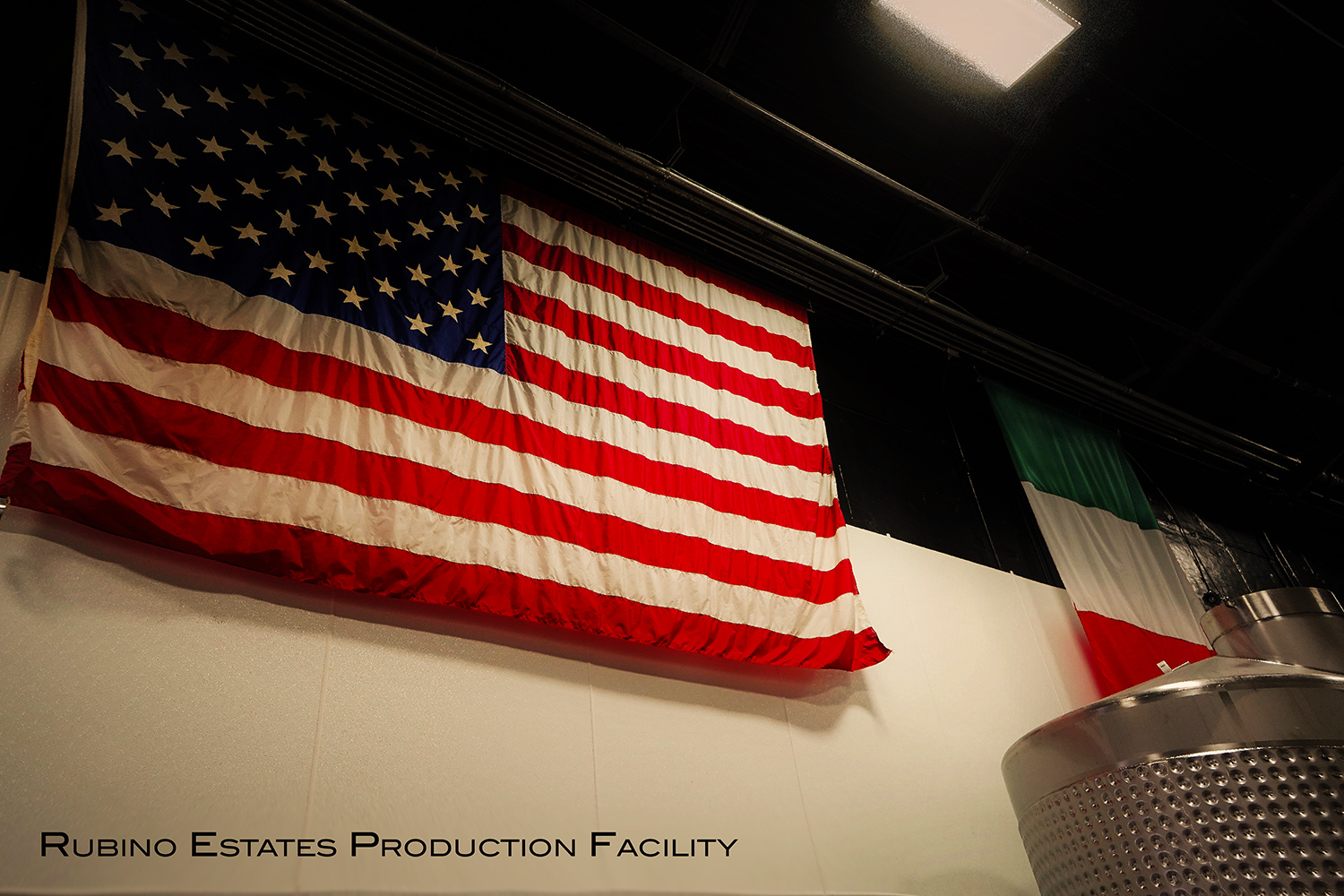 This weekend is our time to celebrate the United States! Nowadays, every U.S. state (yes, even Alaska) produces wine, but that wasn’t always the case. Just like this country, winemaking in the US has come a long way from humble and difficult beginnings, with plenty of mistakes along the way. Today, we’re taking time to look back and celebrate progress!
This weekend is our time to celebrate the United States! Nowadays, every U.S. state (yes, even Alaska) produces wine, but that wasn’t always the case. Just like this country, winemaking in the US has come a long way from humble and difficult beginnings, with plenty of mistakes along the way. Today, we’re taking time to look back and celebrate progress!
The first wines in America were made in the 16th century with native grapes, in an area near modern-day Jacksonville, Florida. In the charters held by European settlers, winemaking was listed as one of the goals of their venture. When they found the native grapes unpleasant to their palate, Europeans eventually began bringing cuttings from their favorite wine grapes across the Atlantic. In the same era, Spanish settlers in what is now California and New Mexico began planting vineyards as they built Missions, a heritage which continues today with California’s robust wine country.
After the United States was established, Thomas Jefferson attempted to plant a vineyard with French grapes, but the vines could not hold up in the North American climate. In 1805, two small oak casks of wine were brought to President Jefferson from a new winery in Kentucky, but the winery’s vines soon suffered a similar fate. Winemakers in the early United States were met with continual opposition from the North American climate and pests, which European grapes could not sustain. It was not until traditional French grapes were crossed with grapes native to the Americas that the U.S. saw its first widespread commercial plantings.
Cincinnati, Ohio was the home of the first majorly successful wineries in the United States, beginning in the early 1800s. Helped by the labor of German immigrants and the soil of the Ohio River Valley, the wineries boasted at least 1500 acres of vines. These plantings produced until Black rot swept through, decimating the plantings. To escape the rot, several winemakers moved their operations to the now-famous Finger Lakes region of New York. The oldest continually operating winery in the U.S. is Brotherhood Winery in New York, established in 1839, only 45 years before the first plantings on our Estate.
Prohibition began nationwide in 1920 when the 18th amendment was ratified, and put a severe dent in the U.S.’s place in the wine market. Limited production of wine was permitted for sacramental use, allowing the monks and nuns of Mission wineries to preserve some of the grape varieties people loved. Of course, bootleggers also helped sustain the industry, transporting and selling alcohol illegally. At the time, our Estate winery was permitted to operate to produce sacramental wines, but Ernest Ferrario, the owner at the time, was widely rumored to also be a bootlegger.
Prohibition was repealed in 1933, shortly after the global GDP had dropped at least 15% in the beginning of what is now called the Great Depression. Demand for heavy, sweet wines with high alcohol content increased, and the American wine industry struggled to dust itself off and keep up with demand. As time passed and research into winemaking was performed by premier academic institutions, most notably California’s UC Davis, US winemaking grew in both quality and efficiency.
The 1970s saw a flood of investments into American (especially Californian) wineries as winemakers focused on making wine the best it could be. No longer would they aim to produce a copy of European wine, but rather unique, brilliant representations of what the US could offer. The Judgement of Paris—a blind tasting in 1976 which resulted in two Californian wines beating out traditional European wines—solidified the foothold of American wine in the global market. Robust, thrilling, and exuberant, the wines of the USA could compete with wines from all around the world. They still do. Today, upwards of 1.1 million acres of vines grow in the US, with a production of at least 800 million gallons of wine each year. We're honored to join in this rich legacy and tradition.
What You Should Know About Chardonnay
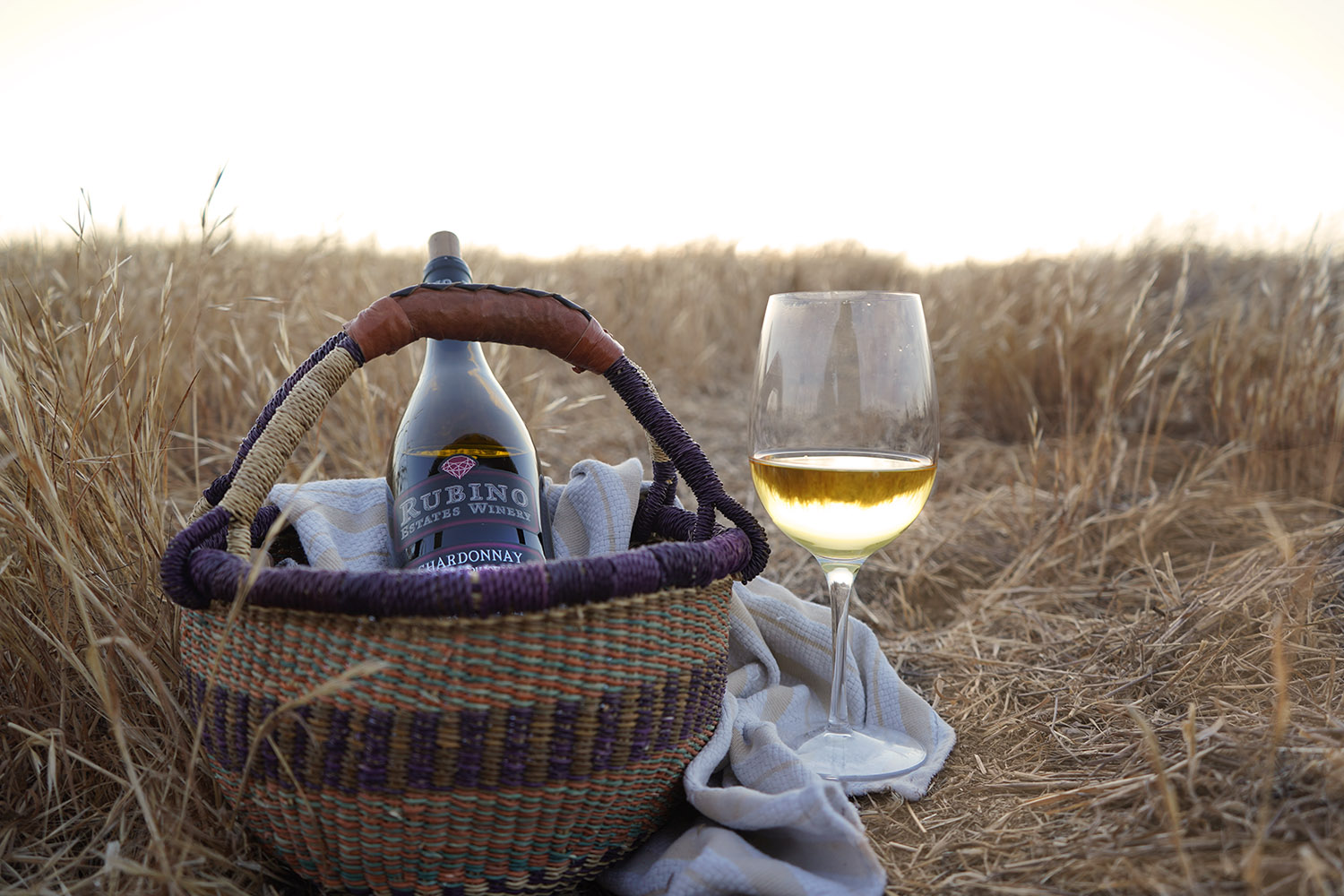 For all of June, we’ve been appreciating our Riserva Chardonnay, which was crowned our ''Wine of the Month.” As one of the most widely known and recognized white wine varietals, Chardonnay has earned its fame from its approachability and golden splendor. Some sommeliers consider the quality of an establishment’s Chardonnay to be a metric for guessing the quality of the winery as a whole. Despite its popularity, there’s a few things you might not know about Chardonnay—so read on!
For all of June, we’ve been appreciating our Riserva Chardonnay, which was crowned our ''Wine of the Month.” As one of the most widely known and recognized white wine varietals, Chardonnay has earned its fame from its approachability and golden splendor. Some sommeliers consider the quality of an establishment’s Chardonnay to be a metric for guessing the quality of the winery as a whole. Despite its popularity, there’s a few things you might not know about Chardonnay—so read on!
The Old World. The Illustrious history of Chardonnay dates back at least as far as the Roman empire, when vines of a varietal called Gouais Blanc were brought from Croatia to mainland Europe. Gouais Blanc would eventually cross-pollinate with the French Aristocracy’s Pinot Noir, creating a robust descendant. The gorgeous golden-green of Chardonnay grapes was born from these vines. For many years, Chardonnay was grown alongside, blended with, and mistaken for pinot blanc. Chardonnay would not gain its own fame until later, partially aided by the particular use of Chardonnay in Champagne.
Californian Perfection. “New World” Chardonnay has a life of its own, with some of the best Chardonnay in the world growing in California. The first successful planting of Chardonnay grapes in California was right here in the Livermore Valley, and we’re proud to continue that legacy. Chardonnay thrives in California’s valleys, where blankets of coastal fog slow the ripening of the grapes and encourage flavorful, robust fruit. Californian Chardonnay exploded in popularity after the “Judgement of Paris” in 1976, where multiple Californian wines, including a Chardonnay, beat French wines in a blind tasting.
Global Spread. Though Chardonnay is now considered the most famous of the white wines, it comes in 6th place in terms of global acreage with around 520,000 total acres. It also comes in second place in terms of acreage for white wines, beat out by the Italian varietal Aivén. As far as global spread is concerned, however, Chardonnay is the winning vine. Virtually anywhere wine is grown, there is Chardonnay.
Person and Place. The widespread cultivation of Chardonnay makes for huge variety in what the wines can offer. It is referred to as “malleable” meaning that the taste of the wine is highly dependent on the style and work of the Winemaker, as well as terroir—the unique conditions of the place in which it was grown. When you sip a Chardonnay, some say you “taste the place.” The Winemaking process lends significant flair as well. A natural process called “malolactic fermentation” is used on some Chardonnay to create a smooth, buttery, and less acidic wine.
Cream and Spice. The use of oak barrels is the source of most of the Winemaker’s influence when crafting a Chardonnay. Some Chardonnays are fermented and aged in stainless steel, though oak lends iconic flavor and complexity. Sometimes referred to as the Winemaker’s spice rack, oak barrels, when used either for aging or for both fermentation and aging, can impart toasty flavors of vanilla, caramel, spice, cream, coconut, cinnamon, cloves, and more. After bottling, Chardonnay is delicious when young while still holding up well if aged.
If you think you don't like Chardonnay, don't give up on it! Don't be afraid to give it another try--likely, you just haven't found the right one for you. There's a bottle out there that's perfect for your palate and preferences.
If you're a fan of our critically-acclaimed Riserva Chardonnay, don't miss your chance on our Wine of the Month sale!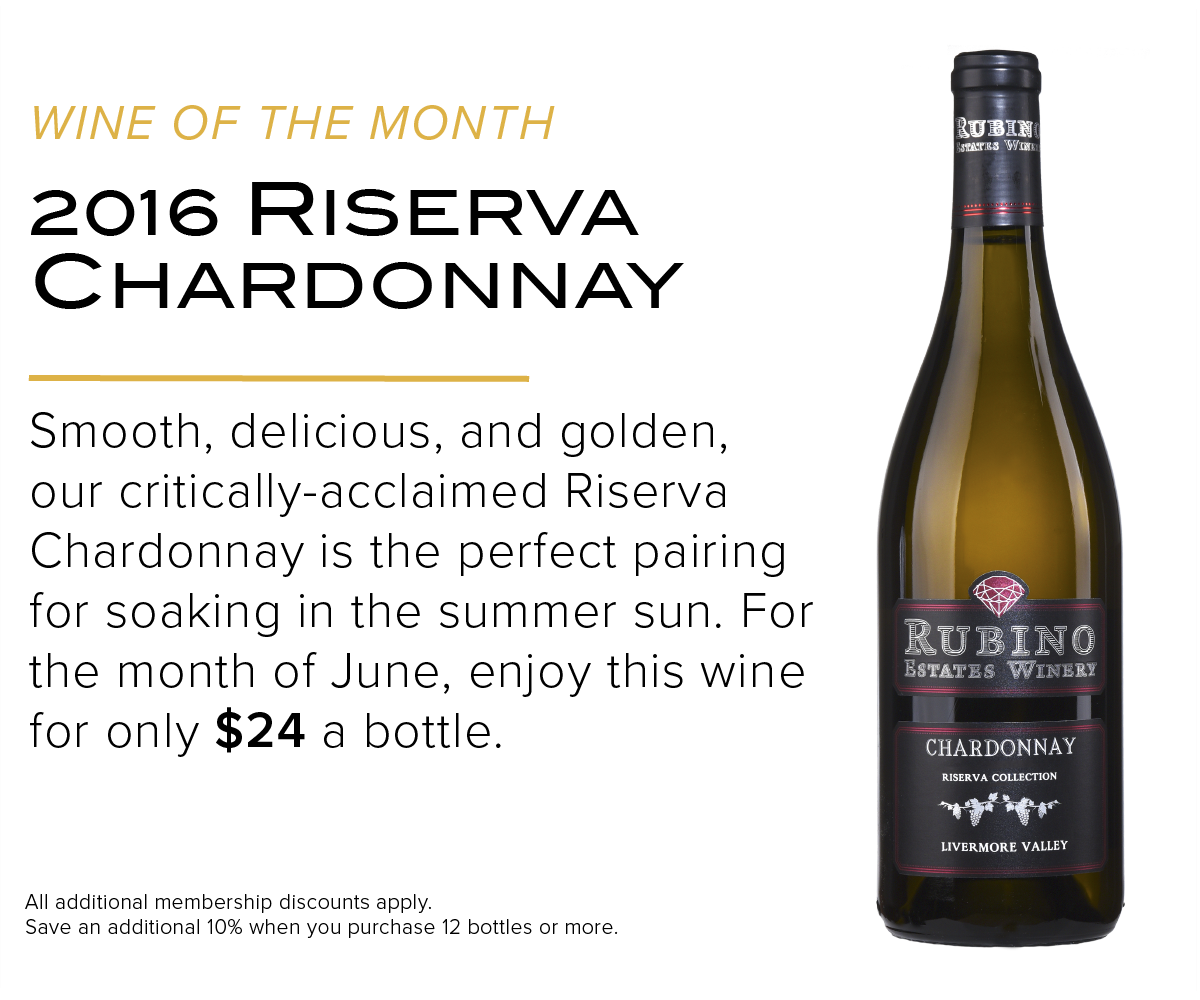
Why You Should Bring Sparkling Wine to a Cookout
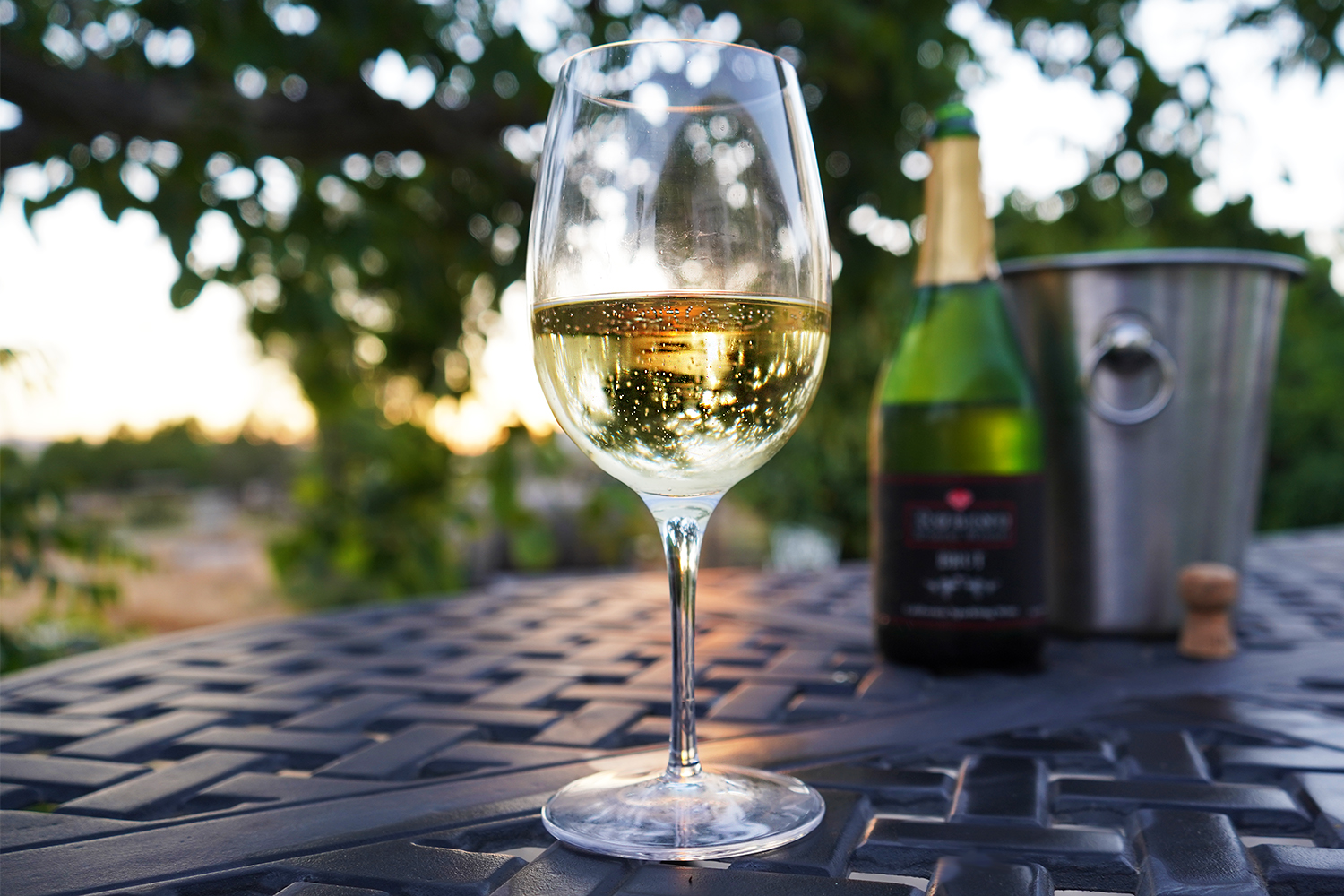
Marinated Grilled Vegetables - A Spicy Perspective
Our parents were right--we’re better off if we eat our veggies. In this case, we’re popping them in a marinade so they offer a burst of flavor as well as color to our smorgasbord. Feel free to play with the flavors, and don’t forget to take a picture of the perfect char marks.
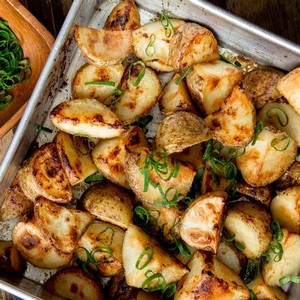
Honey Miso Garlic Roasted Potatoes - Pups With Chopsticks
If you’re looking for an elevated substitute for potato salad, look no further than these grilled potatoes. A symphony of umami, sweet, and salty, this recipe promises perfect texture and toothsome taste, perfect for before and after a sip of sparkling wine.

Cheesy Scallion Cornbread - Charlyne Mattox for Country Living
Nothing tastes quite as deliciously authentic as hot cornbread cooked in cast iron. Whether you have a cornbread pan or just a standard cast iron skillet, this classic is a must-have for your cookout. The scallions add a perfect touch of color and the cheese takes this from tasty to drop-dead delicious–and perfect for pairing.
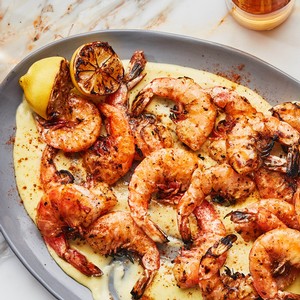
Grilled Shrimp with Old Bay and Aioli - Molly Baz for Bon Appetit
It's hard to beat the smoky, savory profile of grilled shrimp, accented perfectly in this dish by charred lemons and homemade aioli. A little topping of Old Bay seasoning will transport your taste buds to a seaside celebration. Chase it with a sip of bubbly, and you’re in for a good night.
Hopefully, we’ve given all the inspiration you need for an evening of grilling and sweet celebration. If you’re interested in some Sparkling Wine to go along with your dinner, it’s the perfect time to take advantage of our Dads & Grads sparkling sale, available this weekend only!
How to Choose the Right Rosé
 June 12th is Rosé day! This holiday falls on the Second Saturday of June each year, and we're big fans! Rosé wine is on the ascendance, and with good reason. Rosé can be just as sophisticated and refined as red and white wines, with astonishing variety and delicious complexity. Whether you prefer bold or delicate, aromatic or fruit-forward, dry or sweet, there’s a blushing bottle with your name on it. Once you find one you like, another world is opened up to you.
June 12th is Rosé day! This holiday falls on the Second Saturday of June each year, and we're big fans! Rosé wine is on the ascendance, and with good reason. Rosé can be just as sophisticated and refined as red and white wines, with astonishing variety and delicious complexity. Whether you prefer bold or delicate, aromatic or fruit-forward, dry or sweet, there’s a blushing bottle with your name on it. Once you find one you like, another world is opened up to you.
Why is it pink?
There’s actually a couple possible answers! Though it's a popular assumption, rosé isn't made by mixing red and white wines together. It may seem counter-intuitive, but it is possible to make light wines—even white wines—out of purple grapes. The coloration of wine comes from the skins of the grapes, so if the skins are removed before pressing, the product has no red hue. Rosés are crafted from same grapes used in making red wines. In the most popular method, the winemaker leaves the juice in contact with the skins until the desired color is achieved, then strains off the skins. This is the case for both our Rosé of Nebbiolo (100% Nebbiolo) as well as our brand-new 2020 Salute Rosé (100% Sangiovese).
Why is it young?
Darker red wines take time to age and settle into their tannins. Rosé wines, in contrast, are made to capitalize on the delicate aromas and fresh, fruity flavors of their varietals. This is best captured by fermenting the wine at a lower temperature and bottling the wine sooner than other varieties, capturing the precious aromas. Don’t be afraid of a 2020 Rosé! The wine is ready to be enjoyed in all of its intricate flavors and structure.
Which Rosé is right for my palate?
Think about different Rosés the same way you would think about different red wines. Just like you can expect big differences between a Pinot Noir and a Petit Verdot, you can expect big differences between different types of Rosé.
To list a few of the classics: if you like Rosé with high, zesty acidity and fruity notes, go for a Grenache Rosé. For palates that prefer a pale, herbaceous, and savory profile, a Tempranillo Rosé is right for you. Syrah and Cabernet Rosés are full bodied and can often be served and paired like red wine, bearing similarities to their red counterparts without the complexities of oak aging. Zinfandel Rosé, also called White Zinfandel, is mildly sweet and best served very cold. US-grown Nebbiolo Rosé is hard to find, but it’s perfect if you’re looking for a medley of ripe fruit flavors with a light body and pleasantly balanced tartness. If you want a fruity Rosé with a sparkling, coppery color, bursting with fresh flavors without being too sweet, opt for a Sangiovese Rosé.
What flavors should I look for while tasting?
Most Rosé wines have rose petal aromas and pleasant minerality, though every varietal has its own expression. With our Salute Rosé, look for flavors characteristic of Sangiovese Rosé, namely strawberry, raspberry, wild cherry, watermelon, cranberry, and herbs. In our Nebbiolo Rose, on the other hand, search for flavors and aromas of wild strawberry, pomegranate, raspberry, grapefruit, violets, and white pepper.
Wine and Spice & Everything Nice
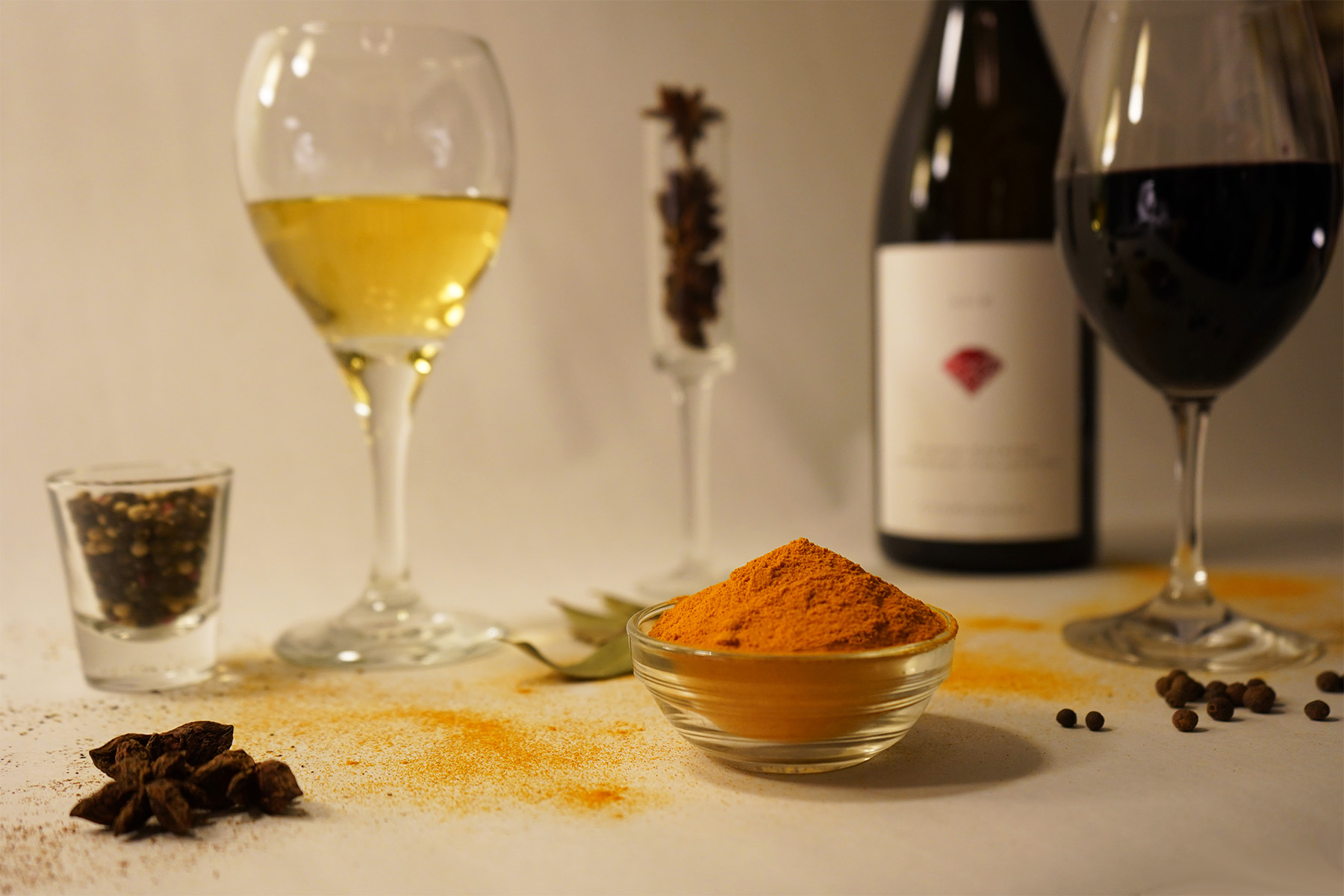
Chive - Trebbiano
Chives can be thought of as the subdued cousin of onion and garlic. The elegant umami flavor profile of this herb makes chives more than merely a beautiful garnish; they shine in fresh, light foods like omelets, deviled eggs, fish, and salads. These dishes pair deliciously with the creamy mouthfeel and light acidity of our Trebbiano.
Turmeric - Riserva Chardonnay
Dishes cooked with turmeric feature complex and pungent citrus-pepper notes appearing alongside the signature orange-yellow pigmented hue. Enjoy the flavorful, earthy profile with a glass of buttery-smooth and delightfully aromatic Riserva Chardonnay for a pairing that is good as gold.
Allspice - Landmark Pinot Noir
Similar in appearance to peppercorns, Allspice features warm scents of baking spice with a hint of pepper. Suitable for both sweet and savory applications, allspice smells like the holidays all year round. Notes of baking spice and golden crisp apple in our Landmark Pinot Noir make this couple terrifically toothsome.
Rosemary - Primitivo
Rosemary is a friend of wines, pairing well with a number of different reds and blends. Whether dried or fresh, it makes for a tasty and aromatic addition to savory dishes—whether it’s roasted potatoes, focaccia bread, or baked chicken. Enjoy these alongside the smooth body and oak-framed fruit notes of our Primitivo for a delicious combination.
Bay Leaf - Landmark Nebbiolo
Dried bay leaves are sturdy herbs known to infuse a subtle, almost tea-like, layer of complexity to dishes. Perfect for dishes that require some simmering time, bay leaves lighten up hearty dishes and provide a delicate accompaniment for the elegant aroma and full body of our Landmark Nebbiolo.
Black Pepper - Riserva Cabernet Sauvignon
What’s better with a glass of Cab than a medium-rare cast-iron seared steak? A pepper-crusted steak! It’s no coincidence; the characteristic tannins of Cabernet Sauvignon build a perfect flavor bridge that is highlighted by dishes with black pepper. Our Riserva Cab has layered, brooding aromas of dark fruit and hints of spice, perfect alongside fresh cracked black pepper.
Anise - Landmark Barbera
Star anise is beautiful and potent, steeping a sweet peppery licorice flavor into a wide range of savory dishes. Our Landmark Barbera features notes of star anise amidst its complex aroma, making it a stellar companion for anise dishes.
Careful pairings of wine and spices allow different, individual notes of the wine to shine through. It’s often the seasoning of the dish, rather than the dish itself, that makes a pairing palate-perfect, so feel free to experiment and expand this guide to make your food & wine harmonize better than ever!
